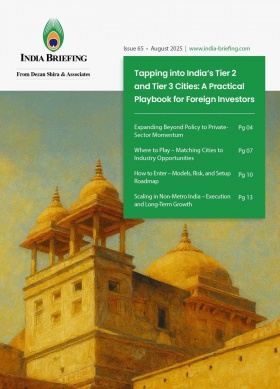GST Registration in 72 Hours: India’s New Auto-Approval System to Begin Nov. 1, 2025
From November 1, 2025, India will roll out a simplified GST registration system under the GST 2.0 reforms, offering automatic approvals within three working days for most new applicants. In this article, we outline the key features, online registration steps, and preparation measures businesses should take to align with the new digital, risk-based GST framework.
India will introduce a simplified Goods and Services Tax (GST) registration framework effective November 1, 2025, to make tax compliance faster and more transparent. The reform, part of the GST 2.0 initiative approved by the GST Council, will enable automatic approval of new registrations within three working days, reducing manual intervention and streamlining the process for businesses.
Key features of the new registration framework
Under the new system, automatic registration will apply to two categories of applicants:
- Low-risk applicants identified through data analytics and system-based risk assessment; and
- Businesses with a self-declared monthly output tax liability not exceeding INR 250,000 (US$2,832.7).
According to the central government, nearly 96 percent of new GST applicants will qualify for this simplified route. The broader GST 2.0 reforms also include rate rationalization, simplified return filing, automated refund mechanisms, and risk-based audits, all aimed at making the tax ecosystem more efficient, equitable, and business-friendly.
Additionally, GST Seva Kendras across the country will be strengthened with adequate staffing and help desks to assist taxpayers, ensuring smooth implementation.
Importance of GST registration for businesses
GST registration is more than a regulatory requirement; it is a gateway to formalization and growth. Holding a GST Identification Number (GSTIN) provides several benefits, including the following:
- Legal recognition of the business under Indian tax law.
- Eligibility to claim input tax credit (ITC) on purchases.
- Access to interstate and e-commerce marketplaces.
- Enhanced credibility with suppliers, investors, and financial institutions.
Whether it’s starting a new venture or formalizing an existing enterprise, timely GST registration is essential for compliance and operational efficiency.
READ MORE ON: What is GST Migration and Why it Matters for Businesses?
Step-by-step guide to online GST registration (2025 update)
The GST registration process is fully digital and can be completed through the official GST portal (www.gst.gov.in) without any government fee.
Step 1: Begin the application
- Visit the GST website homepage. Click on Services > Registration > New Registration.
- Choose “Taxpayer” and fill out Part A of Form REG-01 with your Permanent Account Number (PAN), mobile number, and email ID.
- Verify your contact details using OTPs sent to your email and phone.
- Upon successful verification, you will receive a 15-digit Temporary Reference Number (TRN).
Step 2: Complete business details
Log in using your TRN and complete Part B of the form. Enter key information such as:
- Business details, including trade name, constitution, and commencement date.
- Promoter/partner details such as PAN, Aadhaar, and other personal information.
- Primary place of business, which includes address and proof (e.g., electricity bill or rent agreement).
- Bank account details. This may be provided later while filing returns.
- List up to 5 main goods and 5 services with their HSN/SAC codes.
CLICK HERE: GST 2.0: How India’s New HSN and SAC Code Structure Transforms Tax Compliance for Businesses
Step 3: Upload required documents
Under the GST registration process, the type of documents required depends on the business structure. These should be uploaded in PDF or JPEG format (under 1MB).
|
Business type |
Documents required |
|
Proprietorship |
PAN & Aadhaar of proprietor, photograph, business address proof, bank details |
|
Partnership/Limited Liability Partnership (LLP) |
Partnership deed, PAN of firm, PAN & Aadhaar card details of partners, address proof, bank details |
|
Private limited company |
Certificate of Incorporation, PAN of company, PAN & Aadhaar card details of directors, board resolution, entity address proof |
Step 4: Verification and submission
Before submission, verify the accuracy of the information provided. The application can be authenticated using:
- Digital Signature Certificate (DSC)- mandatory for companies and LLPs.
- Aadhaar OTP (e-Sign)- for individuals and proprietors.
- Electronic Verification Code (EVC)- OTP sent to registered mobile number.
After submission, the applicant will receive an Application Reference Number (ARN) via SMS and email. The application status can be tracked on the GST portal. While approval generally takes three to seven working days, under the new automatic approval framework, GST registration applications will be expedited within three days.
Preparing for GST 2.0: What businesses should do
As the GST 2.0 reforms take effect, businesses should take proactive steps to align with the new compliance environment. Begin by reviewing internal processes to ensure accuracy in financial and tax data. Accounting and finance teams should be trained in updated digital registration and filing systems to adapt smoothly to automation-based procedures.
Maintain well-organized and up-to-date business records, as system-driven verification will play a central role in the new framework. Finally, businesses are encouraged to seek guidance from GST Seva Kendras or professional tax advisors to address technical queries and ensure timely, error-free compliance.
Conclusion
The upcoming GST registration upgrade, beginning November 1, 2025, represents a major stride toward ease of doing business in India. By automating approvals, enhancing transparency, and improving taxpayer services, India aims to reduce compliance friction and build a more trust-based tax system.
Businesses that prepare early for these changes by digitizing documentation, ensuring compliance readiness, and understanding the new procedures will be best positioned to benefit from India’s evolving GST landscape.
(US$1 = INR 88.25)
About Us
India Briefing is one of five regional publications under the Asia Briefing brand. It is supported by Dezan Shira & Associates, a pan-Asia, multi-disciplinary professional services firm that assists foreign investors throughout Asia, including through offices in Delhi, Mumbai, and Bengaluru in India. Dezan Shira & Associates also maintains offices or has alliance partners assisting foreign investors in China, Hong Kong SAR, Vietnam, Indonesia, Singapore, Malaysia, Mongolia, Dubai (UAE), Japan, South Korea, Nepal, The Philippines, Sri Lanka, Thailand, Italy, Germany, Bangladesh, Australia, United States, and United Kingdom and Ireland.
For a complimentary subscription to India Briefing’s content products, please click here. For support with establishing a business in India or for assistance in analyzing and entering markets, please contact the firm at india@dezshira.com or visit our website at www.dezshira.com.
- Previous Article India’s Luxury Market Potential for Italian Brands
- Next Article India and China Resume Direct Passenger Flights: Boost for Trade, Tourism, and Regional Connectivity








